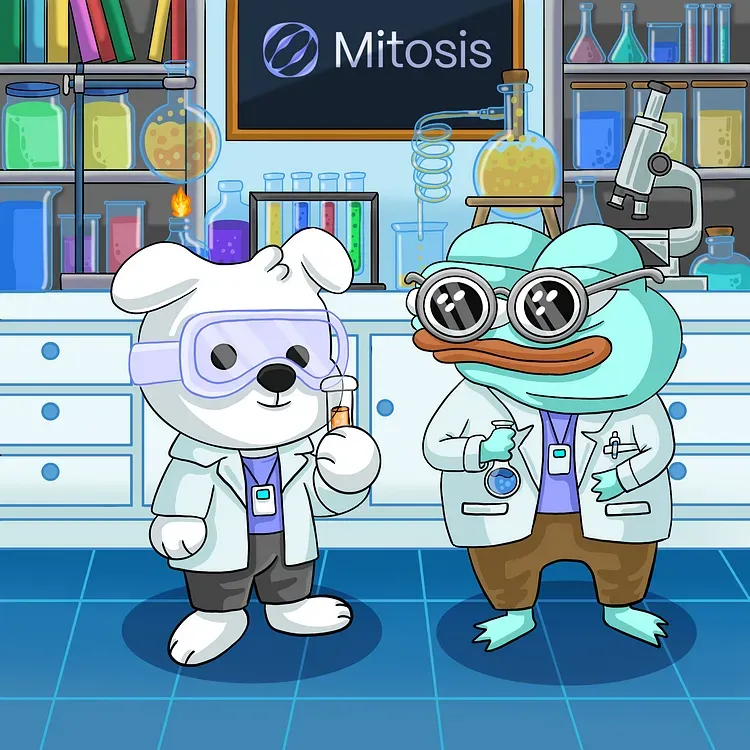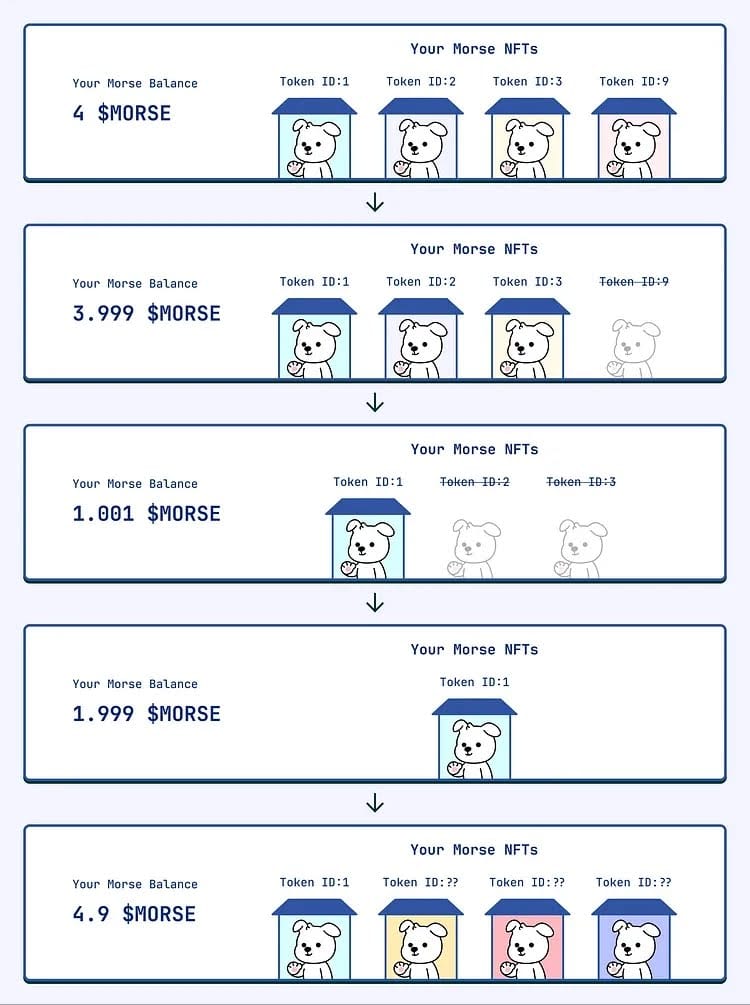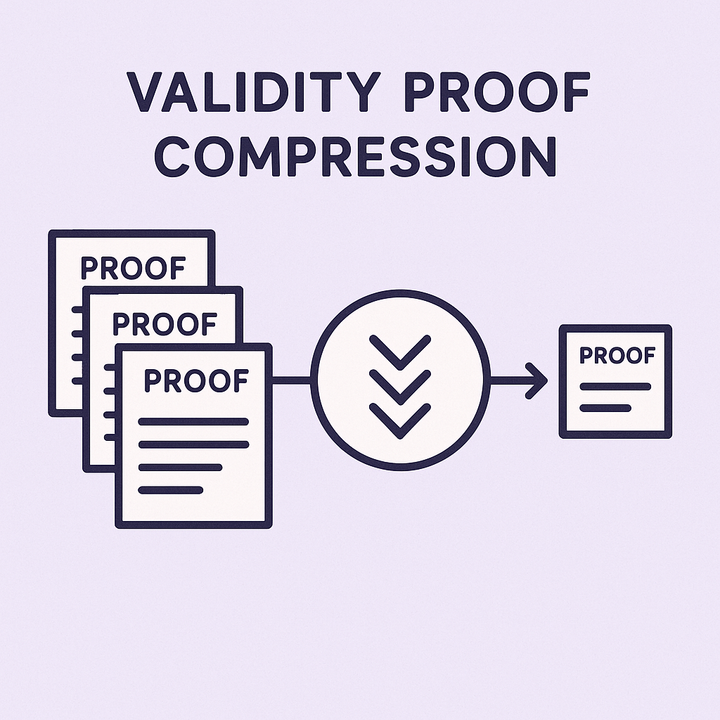MORSE: Redefining Digital Companions Through DN404

In the ever-evolving world of Web3, few innovations spark curiosity and excitement like a new token standard, especially one that challenges the very nature of what tokens can be. Enter MORSE, the flagship project built on the cutting-edge DN404 token standard by the Mitosis team. More than just a collectible or a currency, MORSE introduces a new paradigm: digital companions that are on-chain, fractional, and intelligent. It's where the lines between fungibility, non-fungibility, and digital identity begin to blur. As the crypto space shifts toward utility-driven assets, MORSE is leading the charge with a hybrid model that redefines what NFTs and tokens can be. Let’s explore the technology, personality, and vision behind MORSE and how it may shape the future of digital ownership and identity.
What is MORSE and How It Works
MORSE is not your average NFT. It's a digital companion built entirely on-chain using the DN404 standard. Each MORSE has its personality, mood, accessories, and even "quirks," i.e., traits that evolve based on user interaction and on-chain behavior. The idea is to create not just a static asset, but a living, evolving extension of your blockchain identity. But here’s the twist: MORSE is both a token and an NFT. Users can buy $MORSE tokens on-chain like any other fungible asset. When a user's token balance reaches a whole number (1, 2, 3, etc.), an NFT version of MORSE is automatically minted for them. If the balance drops below a whole number, the NFT is burned. This mechanism introduces a dynamic relationship between ownership and identity, and your MORSE is shaped by how much of it you own.

This fluid model breaks from the traditional mold of NFTs, which are typically fixed, static, and one-per-wallet. Instead, MORSE enables a world where ownership is flexible, dynamic, and layered with personality.
The Technology Behind DN404
At the core of MORSE lies DN404, an innovative token standard that seamlessly merges the functionalities of ERC-20 (fungible tokens) and ERC-721 (non-fungible tokens) through a dual-contract architecture. This design addresses the limitations of previous standards, such as ERC-404, by enhancing efficiency, interoperability, and functionality within decentralized ecosystems.
Dual-Contract Architecture
DN404 employs two distinct smart contracts:
- ERC-20 Base Contract: Manages the fungible token aspect, allowing for fractional ownership and seamless trading on decentralized exchanges.
- ERC-721 Mirror Contract: Handles the non-fungible token representation, enabling unique digital assets to be linked with the fungible tokens.
This bifurcated approach ensures that operations on one contract are reflected on the other, maintaining consistency between the fungible and non-fungible representations of the asset.
Fractionalization Mechanism
Users can acquire fractions of an asset through the ERC-20 tokens. When a user's holdings reach a predefined threshold, the system automatically mints a corresponding NFT via the ERC-721 contract. Conversely, if the holdings fall below the threshold, the NFT is burned. This dynamic facilitates flexible ownership models and enhances liquidity.
Advantages Over ERC-404
- Gas Efficiency: By separating concerns between two contracts, DN404 reduces the computational complexity inherent in single-contract designs like ERC-404. This separation leads to approximately a 20% reduction in transaction fees, making interactions more cost-effective.
- Enhanced Compatibility: Adhering strictly to established ERC-20 and ERC-721 standards ensures that DN404 tokens are compatible with existing wallets, marketplaces, and decentralized applications, facilitating broader adoption.
- Improved Security: The modular design of DN404 allows for more straightforward auditing and reduces the risk of vulnerabilities that can arise from complex, monolithic contract structures.
Real-World Applications
DN404's architecture is particularly suited for applications requiring fractional ownership and dynamic asset representation, such as:
- Digital Companions: Projects like MORSE leverage DN404 to create evolving digital entities that can reflect user interactions and behaviors.
- Asset Tokenization: Real-world assets like real estate or collectibles can be tokenized, allowing for fractional investment and ownership.
- Gaming and Virtual Worlds: In-game assets can be represented as DN404 tokens, enabling players to own, trade, and interact with game items in a decentralized manner. For developers interested in implementing DN404, the official repository provides comprehensive resources and examples.
Personalization, AI Integration, and Community Role
What sets MORSE apart from most digital assets is its vision for AI-powered evolution and customizable traits. Each MORSE NFT isn't just uniquely generated, it's also designed to evolve. Traits like mood, accessories, and even behavior can change based on how a user interacts with their MORSE and the broader Mitosis ecosystem. Future iterations of MORSE aim to integrate AI agents that analyze your on-chain activity to adapt your companion’s personality. Whether you're a DeFi degen, an NFT collector, or a DAO contributor, your MORSE could begin to reflect that identity, i.e., a kind of Web3 avatar that’s as alive as your digital footprint. This personalization isn't just cosmetic. It opens up possibilities for storytelling, quest-based mechanics, and social engagement in ways traditional NFTs can't achieve. Users can also reroll their companions’ traits by burning and reminting them, introducing a fun layer of risk and gamification. Equally important is the community's role in shaping the MORSE ecosystem. Unlike most NFT projects that are driven top-down, MORSE thrives on open participation. Through platforms like Lab 404 and the Mitosis Galxe Lab, the community contributes directly to research, testing, and development. By engaging in missions and proposing ideas, users help define new features, uncover use cases, and earn MORSE token samples. This approach makes the community not just consumers but co-creators of the MORSE narrative, adding a layer of decentralization and collective ownership rarely seen in NFT spaces.
Conclusion
MORSE is not just a novel experiment, it’s a bold signal of what’s possible when creativity, utility, and blockchain innovation collide. It brings a level of emotional depth and interactivity to token ownership that traditional NFTs and ERC-20s have never touched. Powered by the DN404 standard, MORSE introduces a new era of digital assets that are not only owned but truly lived with. One of the key takeaways from MORSE’s design is the way it redefines ownership. Through the DN404 standard, users can hold fractions of a token and still gain access to full NFT experiences once thresholds are met. This hybrid model makes participation more accessible while adding layers of flexibility and strategy to how digital assets are collected and used. Another important insight is MORSE’s focus on evolving digital identity. Unlike static NFTs, each MORSE adapts over time based on your on-chain activity and interactions. This makes the asset feel more like a companion or avatar, i.e., something that reflects who you are in the Web3 world. As AI integration deepens, this evolution will become even more personalized and responsive. Finally, MORSE stands out because it is driven by community and experimentation. The open research approach from Mitosis, combined with interactive tasks, rewards, and community-building, ensures that MORSE isn’t just a product, but a living, growing ecosystem shaped by its users. This participatory design sets a strong precedent for how future decentralized projects might grow. So the big question is: What happens when your digital assets stop being static collectibles and start becoming dynamic companions? MORSE invites us to explore that future and brings us one step closer to digital assets that feel alive.

Comments ()